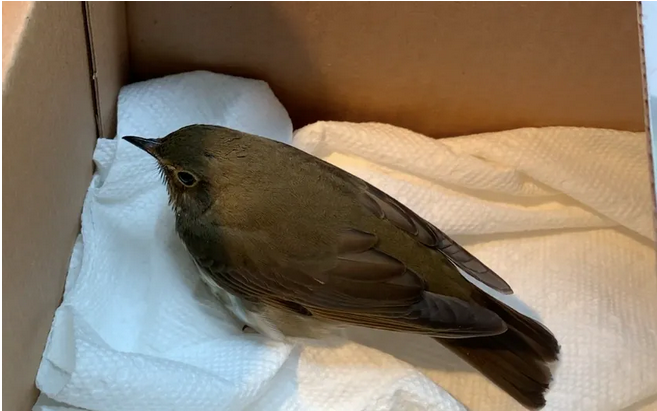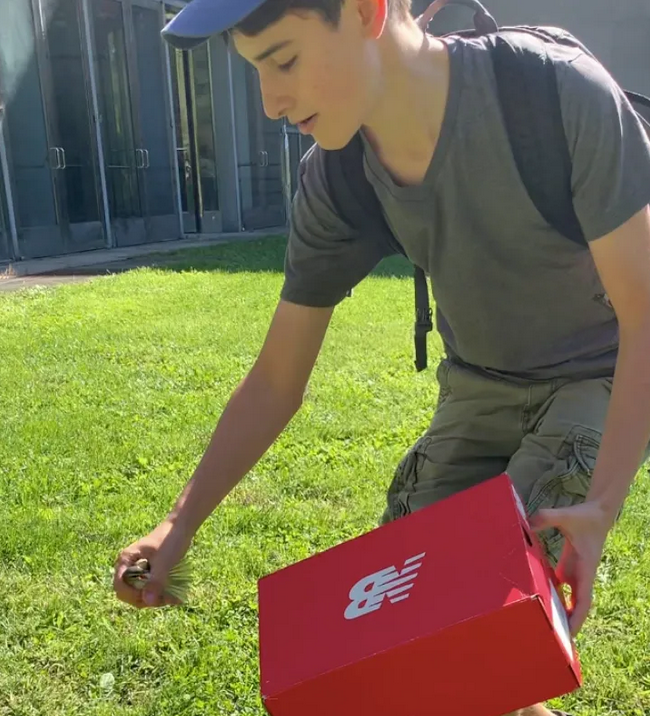When I was younger the Metropolitan Museum of Art was my favorite place on Earth. I loved to learn about ancient art and history. Throughout the years my thirst for knowledge on ancient history has been somewhat supplemented for a knowledge on birds. However, I still visit the MET often, but I now have a more nuanced view of the museum, this is because its windows kill birds.
The West facing section of the MET includes a wall made entirely of glass panels. There are other sections of the MET with this type of design, but they don’t rack up as many kills due to their positioning. The Southern window panelling is not very transparent or reflective, and the glass windows of the Egyptian wing aren’t close to good bird habitat, but the windows on the western side of the building parallel to Cleopatra’s needle are incredibly reflective and adjacent to several trees that are frequented by warblers, thrushes, and sparrows. Birds see things differently than us humans, so while we see a wall of glass windows in front of the American Wing, they see a nice tree to rest in or gather food from. On one day I found both an injured Swainson’s Thrush and a Red-Eyed Vireo, on another I found a dead Song Sparrow, on another a Lincoln’s Sparrow that was hardly recognizable. I wish I could say that the situation at the MET was unique, or a severe case, but it isn’t, if anything the MET is relatively safe for birds compared to many of the other buildings in the city.
New York City is an interesting place for birds in that it is both a heaven and a hell. Birds find a safe haven during migration in the city’s parks. At the same time, many birds die by colliding with windows trying to get through the city, and most birds would probably avoid NYC if it weren’t for the fact that its bright lights attract birds from miles away. Every year 90,000-230,000 birds are killed in NYC according to the NYC Audubon. The number worldwide is even higher, an estimated 1 billion birds. with a death rate like that it is know wonder that 1/3 of the US’s birds have disappeared since the 1970’s.
As a New Yorker, I have decided to make ending window strikes my mission in life. I have spent my time volunteering with organizations that help stop these problems, like the non-for-profit wildlife rehabilitation The Wild Bird Fund, from which I learned firsthand the terrors that birds face after they hit windows, and how they are harmed by both internal and external injuries. I also volunteered with New York City Audubon’s project Safe Flight, an organization that monitors New York City for injured and dead birds that have hit windows and collects data based on these incidents to find out the most dangerous locations in the city for birds and how we can help them. I have learned lots of useful information that I have had the misfortune of having to apply in real world scenarios, such as placing an injured or stunned bird in a bag or shoebox to keep it calm. I used the information I gathered from these groups to help draft a petition calling for a law to promote bird-friendly construction using bird friendly glass. When a law like the one was introduced to the New York City Council I testified before the Committee on Housing and Building in support of the bill, which passed in-committee and in the council. Even though the law was passed, we still have a long way to go before bird deaths decrease in New York City, the law only applies to parts of new and renovated buildings, and the most troubling buildings for birds probably won’t be renovated any time soon.

There are many ways that you can help end this horrific problem, wherever you live. Window-strikes don’t just occur in cities, they occur wherever there are humans, I have even found window-strike victims inside national parks. You can help by placing decals on all of your windows, or using bird friendly glass. You should turn off all of your lights at night, because lights attract migrating birds. You can also volunteer at your local wildlife rehabilitation center and local Audubon society. If you find a dead bird, record your findings in whatever way you can. Bring this problem to the attention of your local legislators, if a bird-friendly glass bill can pass in New York City, a place known for its glass skyscrapers, it can probably pass in your local city or town. That being said, even with bird-friendly legislation in place the problem will not end. The best thing you can do for birds is raise awareness of this issue, do more research on the topic, and make it your mission, as well, to end it.
